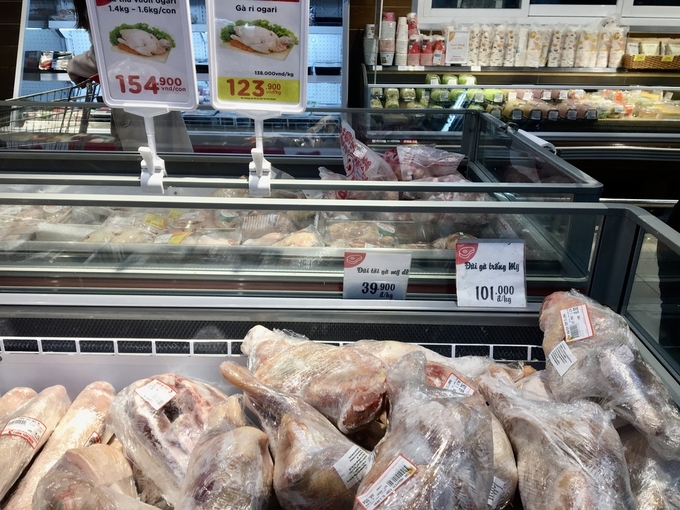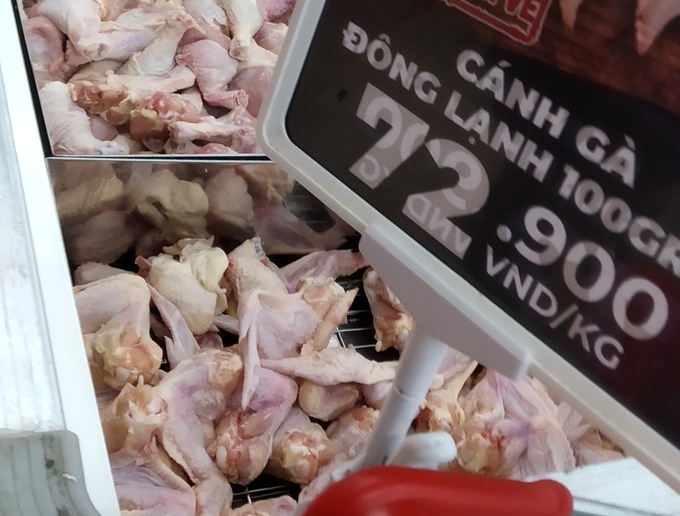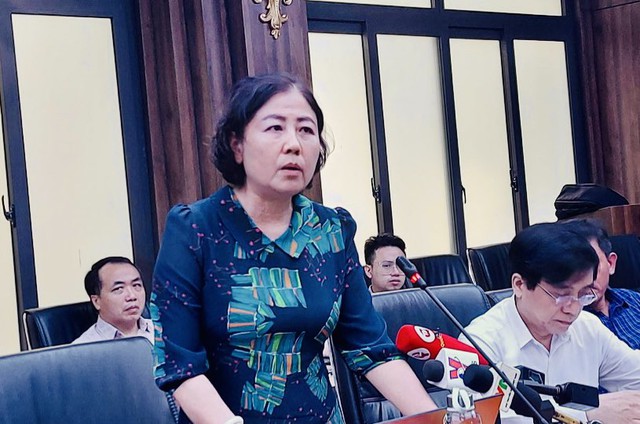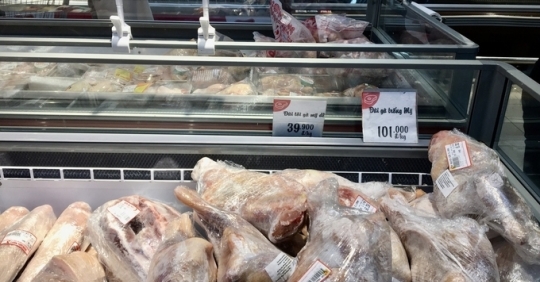
According to the Ministry of Animal Health, the process of inspecting imports of poultry meat products for food is carried out in six steps. Picture: PH.
Currently, according to the Ministry of Animal Health (Ministry of Agriculture and Rural Development), the inspection of import and quarantine of imported poultry meat products from other countries is based solely on the provisions of the Veterinary Medicine Law, the Law on Safety and Health. Food and the guiding documents according to the law.
In addition, Vietnam is a member of the World Trade Organization (WTO) and is deeply integrated into the global economy. Therefore, the issue of international trade in animals, animal products in general and poultry meat products in particular must comply with the Agreement on Animal and Plant Quarantine (SPS/WTO Agreement).
Specifically, the verification process for importing poultry meat products for food is carried out in six steps.
Step 1: When an application is made to export poultry meat products to Vietnam for food purposes, the competent veterinary authority of the exporting country must submit relevant information to the Ministry of Animal Health upon request, such as: B. the epidemic situation, epidemic surveillance regulations, management and surveillance of veterinary hygiene conditions of the production chain, etc. to carry out import risk analysis.
Step 2: Based on the information provided by the competent veterinary authority of the exporting country in combination with other sources of information, for example the World Organization for Animal Health (OIE), the Ministry of Animal Health carries out an analysis and assessment.
If the results meet the disease and food safety requirements of Vietnam and are consistent with international practices and the provisions of the SPS/WTO Agreement, the Ministry of Animal Health will organize a food inspection team. economy in the exporting country.
Step 3: Based on the results of the import risk analysis and the satisfactory results of the physical inspection, according to the regulations and guidelines of the OIE and the Arrangements for Quarantine of Animals and Animal Products signed by Vietnam, the Ministry of Animal Health will notify that the exporting country must comply with the import conditions and the form of the quarantine certificate for agree to export to Vietnam.
Step 4: The competent authority of the exporting country must send the application for registration of establishments producing and trading poultry meat products for food to Vietnam in accordance with the provisions of Government Decree No. 15/2018/ND-CP of February 2, 2018, which states: Number of Articles of the Food Safety Act.
Step 5: The Department of Animal Health conducts an assessment, review and assessment of each facility’s export registration documents (in combination with a physical inspection, where appropriate). Only companies that meet the requirements are included in the list of companies allowed to export to Vietnam.
Step 6: When imported into Vietnam, shipments of poultry meat products must be quarantined in accordance with the regulations.

At present, the quarantine and inspection of poultry meat products from countries entering Vietnam is strictly organized in line with international practices to ensure meat products are inspected and monitored by relevant authorities. Export country rights and strict import control. Picture: PH.
According to the Ministry of Animal Health, based on the importer’s registration and quarantine declaration, the veterinary authority at the border crossing will check each shipment for quarantine records and current status upon arrival of the goods at the import border gate. Taking goods and samples for testing for mandatory quarantine criteria (consignments of frozen poultry products must be held at the import border gate pending inspection results).
If the requirements are met, the new consignment will be issued with an import quarantine certificate.
In addition, the Ministry of Animal Health carries out annual sampling according to the surveillance program to check the criteria for antibiotic residues in imported poultry meat products.
Therefore, quarantine and inspection of poultry meat products from countries entering Vietnam is strictly organized in line with international practices to ensure meat products are inspected and monitored by relevant authorities. Export country rights and strict import control.

Ms. Nguyen Thu Thuy, Deputy Director of the Department of Animal Health. Picture: FIT.
At a recent press conference on agribusiness, Ms. Nguyen Thu Thuy, deputy director of the Ministry of Animal Health, reiterated that it takes at least 4 to 5 years for any imported animal product to be considered for importation, which is a rigorous process.
In particular, the Department of Animal Health needs to review records of the disease while monitoring the process of ensuring food safety in the importing country. Therefore, it is inappropriate to say that food imported into Vietnam does not offer a guarantee of quality.
The representative of the Ministry of Animal Health also emphasized that as a member of the World Trade Organization (WTO) there are no discriminatory regulations.
Regulations on standards and regulations, if developed and applied to food from importing countries, must also apply to food in the country.
“Poultry products in Vietnam, namely chickens that lay eggs after a period of exploitation, are still used as food for the people. In the negotiations we cannot say what kind of chickens will be thrown away. These cannot be imported into Vietnam,” said Ms. Nguyen Thu Thuy.
According to the Deputy Director of the Ministry of Animal Health, according to the current regulations, the control rate for imported consignments is 5%, which means that out of 100 consignments only 5 consignments are checked.
When inspecting imported rural animal feed (chicken, pork, beef…), the Veterinary Office has not found any cases of residues on food to an extent that would require a warning in the last 2 years.
However, the Ministry of Animal Health, headed by the Minister of Agriculture and Rural Development, is reviewing the food standards of countries exporting meat to Vietnam, focusing on two major markets, Korea and Brazil, to promptly identify and address deficiencies.
According to the Vietnam Poultry Breeding Association (VIPA), illegal transport and trade of poultry and poultry products across the border into Vietnam has continued to be complicated in places that share borders with other countries, particularly central and southern provinces.
Since then, VIPA suggested the government immediately issue a document banning the import of poultry meat products from countries that use growth stimulants such as ractopamine and cysteamine.
At the same time, VIPA also suggested that the Ministry of Agriculture and Rural Development and relevant ministries and branches should immediately take non-tariff measures to protect the production and consumer health of our country.

